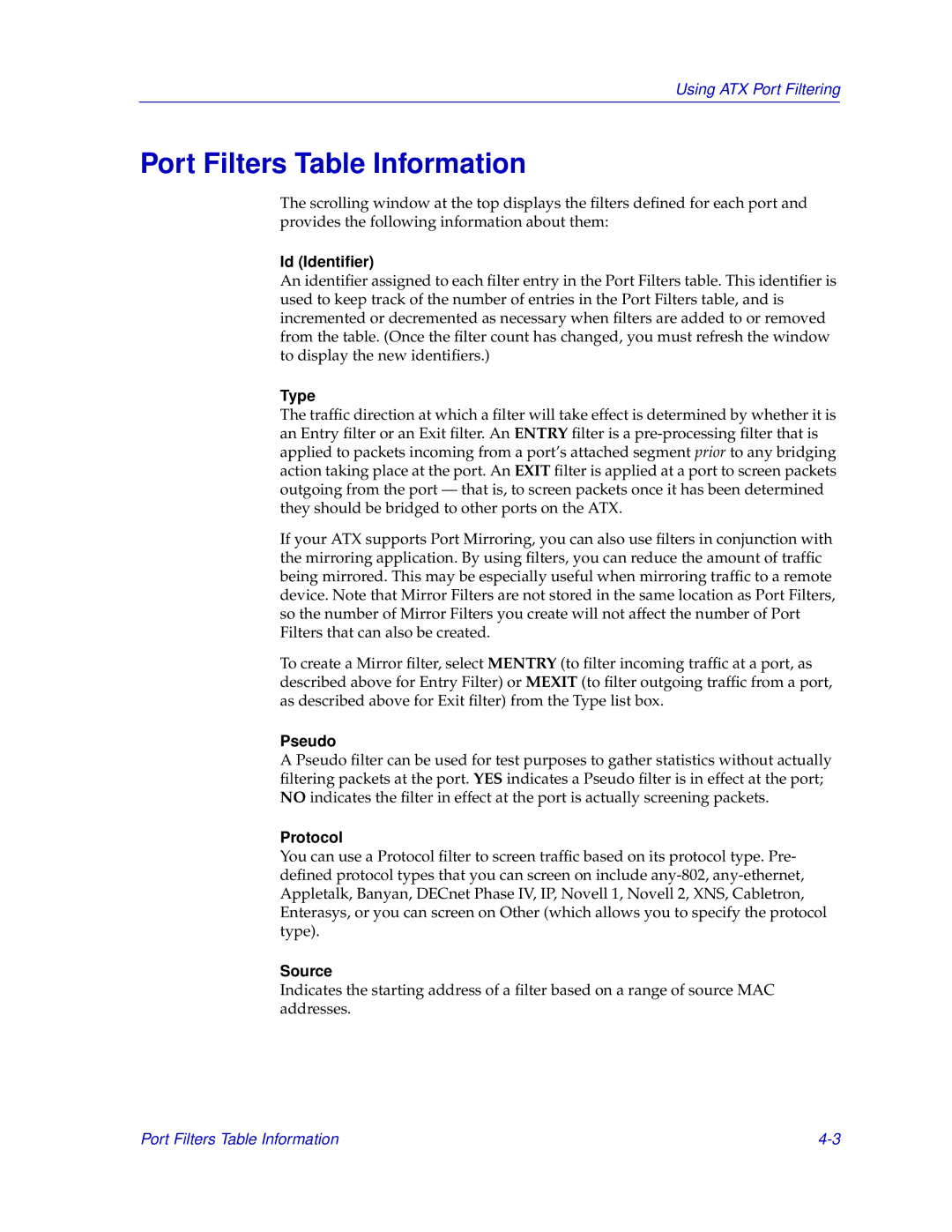Using ATX Port Filtering
Port Filters Table Information
The scrolling window at the top displays the filters defined for each port and provides the following information about them:
Id (Identifier)
An identifier assigned to each filter entry in the Port Filters table. This identifier is used to keep track of the number of entries in the Port Filters table, and is incremented or decremented as necessary when filters are added to or removed from the table. (Once the filter count has changed, you must refresh the window to display the new identifiers.)
Type
The traffic direction at which a filter will take effect is determined by whether it is an Entry filter or an Exit filter. An ENTRY filter is a
If your ATX supports Port Mirroring, you can also use filters in conjunction with the mirroring application. By using filters, you can reduce the amount of traffic being mirrored. This may be especially useful when mirroring traffic to a remote device. Note that Mirror Filters are not stored in the same location as Port Filters, so the number of Mirror Filters you create will not affect the number of Port Filters that can also be created.
To create a Mirror filter, select MENTRY (to filter incoming traffic at a port, as described above for Entry Filter) or MEXIT (to filter outgoing traffic from a port, as described above for Exit filter) from the Type list box.
Pseudo
A Pseudo filter can be used for test purposes to gather statistics without actually filtering packets at the port. YES indicates a Pseudo filter is in effect at the port; NO indicates the filter in effect at the port is actually screening packets.
Protocol
You can use a Protocol filter to screen traffic based on its protocol type. Pre- defined protocol types that you can screen on include
Source
Indicates the starting address of a filter based on a range of source MAC addresses.
Port Filters Table Information |
